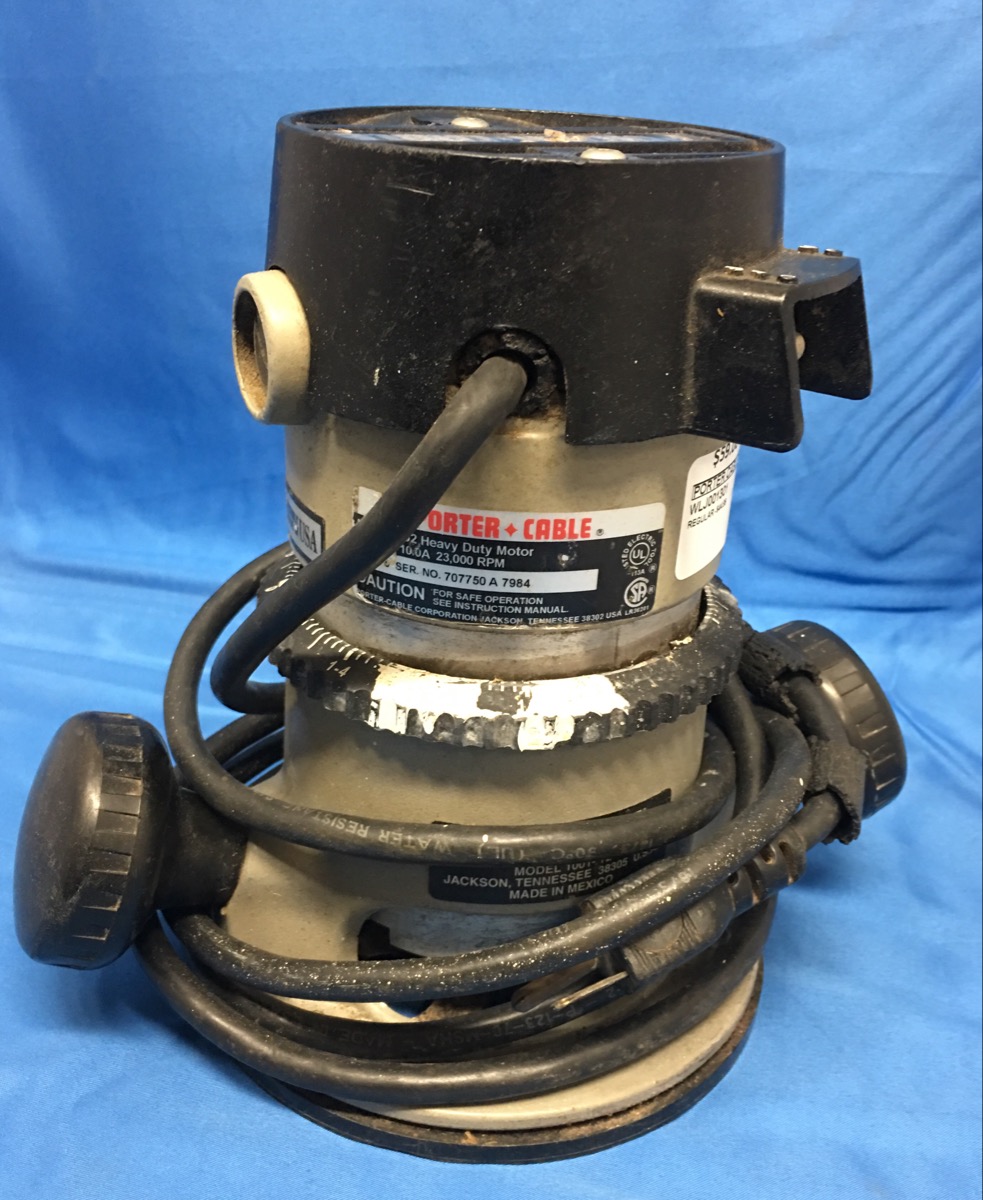

Guide bushing fitted to a router base with cutter extending a short distance through Secondly, the cutter no longer needs to have a minimum diameter unlike bearing-guided bits whose diameter is defined by the minimum physical size possible with bearings. The flange or bracket sits below the base surface whilst the collar extends a short distance below it, and is the part which runs against the template. The cutter plunges freely through the centre into the workpiece allowing for cuts at any depth. Guide bushings are a simple flanged metal or plastic collar fixed to the router base. This is not to say that guide bushings make bearing-guided bits obsolete more that each one can be more appropriate than the other in certain situations.Ī 25mm and 12mm diameter bearing-guided flush trim router bit Guide bushings allow a small range of simple inexpensive cutters to become powerful around a wide range of different tasks by taking over the function of a guide bearing.
#Porter cable router used series#
Many processes around an instrument soon show the limitations of bearing-guided cutters, easily leading to tool bloat ("a different cutter for every single job") or seemingly-simple jobs becoming a series of steps to get past the goal. For jobs like flush-trim cutting, template copy routing or adding chamfers/roundovers, bearing-guided cutters are normally the best solution. Anybody that has done any kind of work around an instrument with a router will know how a bearing-guided router cutter works the cutter's bearing runs against either the workpiece or template, whilst the cutter itself shapes a specific profile into the wood. Guide bushings are a distant relative of the bearing found on a bearing-guided cutter. This introduction is designed to raise awareness of their importance and how to select the right guide bushing system for your router. Subsequent articles in the Router Basics series will provide practical working examples and hopefully inspire you to use them in new and original ways to work smarter.

Guide bushings are a capable and inexpensive upgrade, however they don't see their way into instrument-making as much as they should. Guide bushings can produce complex pickup routs in single passes, produce shallow recesses for bridges/plates or allow cutters to be used in ways that are impossible otherwise. Nothing could be further from the truth.īreaking down how a guide bushing functions and what advantages they have to offer for our work allows us to develop jigs and systems that are just as meaningful and powerful. Whilst we don't see as much of that level of work in musical instrument making (perhaps in DIY cabs/amp heads or acoustic neck dovetails) it doesn't mean that guide bushings are of no use to us. Systems such as these leverage the power of router guide bushings to produce perfect dovetail joints in cabinetry work or carry out other complex precision tasks. They allow for safer working options and in combination with well thought out templates/jigs, a more powerful way to rout work often in ways that are impossible with standard bearing-guided cutters.Īnybody that has experience in fine woodworking outside of instruments may have used or heard of legendary work jigs such as the Leigh Dovetail system or similar.
#Porter cable router used upgrade#
Much as a router is an essential upgrade to any luthier's arsenal, guide bushings can upgrade your routing work to a new level of versatility. How do we select the options that are best for our work, and what do they offer in return? In this Router Basics article, we look at the lowdown on this essential accessory. Router guide bushings are a powerful addition that can extend the capabilities of your router.


 0 kommentar(er)
0 kommentar(er)
